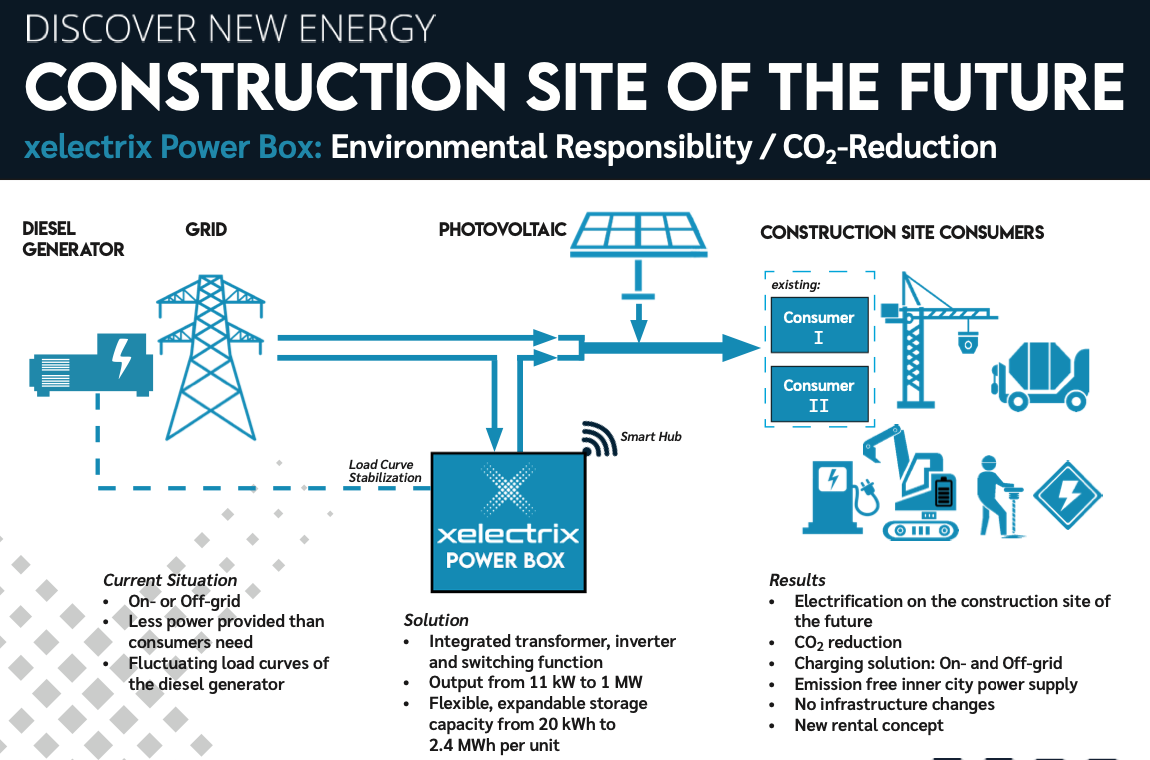Shaun Montgomery is Business Development Manager at xelectrix Power, a maker of high voltage energy storage systems for on-grid and off-grid applications.
We are living in a time that Climate Change has officially become a global issue that has found audience with most countries and most of the planet’s population. Not meeting with emission targets will have catastrophic consequences that will not be able to be reversed.
The mentality towards the transport industry has changed, as is evident in continued growth of electric vehicle (EV) sales. Renewable energy, in the forms of solar photovoltaics (PV) and wind power are now becoming commonplace – at utility-scale and in the residential and commercial sectors. These changes are welcome and necessary, but there is a “forgotten sector” – the construction industry.
Building and construction account for approximately 38% of global greenhouse gas emissions, with construction equipment amounting to substantial amounts of these emissions.
Try Premium for just $1
- Full premium access for the first month at only $1
- Converts to an annual rate after 30 days unless cancelled
- Cancel anytime during the trial period
Premium Benefits
- Expert industry analysis and interviews
- Digital access to PV Tech Power journal
- Exclusive event discounts
Or get the full Premium subscription right away
Or continue reading this article for free
For this to truly happen, many conventional ways of thinking will need to change. The biggest single shift will be that clean electrification is required. This is already happening with many cities banning diesel combustion engines from inner-city zones, and the growing trend for construction equipment OEM´s moving their drive train technologies to electrified vehicles.

The company I work for, xelectrix Power, has a mission to be a major disruptor in this segment and become the leader in creating the “Construction Site of the Future”. We are headquartered in Austria, with offices in China (Dongguan City, Guangdong) and Colorado, US.
xelectrix Power is positioned to support these changes through our High Voltage Energy Storage Systems. The lithium iron phosphate (LFP)-based battery systems can act as the backbone for charging infrastructure, whether it be on or off-grid.
With intelligent design, the on-board inverter / transformer combination will be able to charge and discharge power when and where it is needed. This would allow electrically driven construction equipment to run multiple shifts while remaining on site.
On the other hand, should the grid on a specific site be unable to supply the required kW requirements, the xelectrix Power Boxes (XPB) are able to supplement the grid power with power from the batteries in order to meet consumer demands.
Diesel generators are a massive source of emissions in the form of CO2, sulphur dioxide and particulate material that are not only detrimental to the environment, but also to our health. The hybridisation of diesel generators is one of our main focuses. The principle is twofold, first the load curve is stabilised, and secondly, the diesel generator is automatically switched off and the consumers are powered by the on-board batteries. Both of these features amount to massive emission saving, as well as bonus cost savings for the diesel generator operation.
The Construction Site of the Future will also see the XPB being used as a Smart Hub, that will monitor electrical consumer operation transmit this data to controllers who will then have the ability of increasing productivity, performance as well as setting up predictive preventative maintenance schedule.
With some of the scenarios mentioned above, the rental industry will also change. Energy will be sold by the kilowatt-hour and rental stores that are closer to the job sites will be used to supply the equipment required. This will result in shorter transport distances, better maintained units and the utilisation of equipment that is actually designed for specific tasks.
We are all part of the Climate Emergency, and we all have our part to play. We have the choice to select building contractors that emit lower emissions, we have the choice to hybridise diesel generators, we have the choice to create the Construction Site of the Future.
